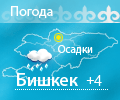Amazing views of nomad land
publicated: 19.12.2017ROUTE:
Bishkek Town – Chon-Kemin Valley - Cholpon-Ata Town - Karakol Town - Kochkor Village - Son-Kul Lake - Kazarman Pass - Arslanbob - Chichkan Gorge - Bishkek Town
DAY 1. BISHKEK
Arrival in Bishkek, meeting at the airport, transfer to the hotel. Rest.
City-tour, including visiting Osh-bazaar, Central Square, Oak park, Victory Square, markets.
Bishkek is situated at about 800 metres (2,600 ft) altitude just off the northern fringe of the Kyrgyz Ala-Too range, an extension of the Tian Shan mountain range, which rises up to 4,855 metres (15,928 ft) and provides a spectacular backdrop to the city. North of the city, a fertile and gently undulating steppe extends far north into neighboring Kazakhstan. The Chui River drains most of the area. Bishkek is connected to the Turkestan-Siberia Railway by a spur line.
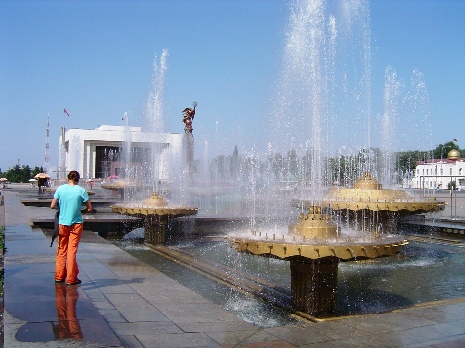
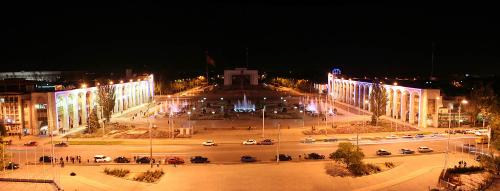
DAY 2. BISHKEK - CHON-KEMIN VALLEY
Transfer to Chon-Kemin Valley. En the route an excursion to the 11th century Burana historical complex.
The Burana Tower is a large minaret in the Chuy Valley in northern Kyrgyzstan. It is located about 80 km east of the country's capital Bishkek, near the town of Tokmok. The tower, along with grave markers, some earthworks and the remnants of a castle and three mausoleums, is all that remains of the ancient city of Balasagun,which was established by the Karakhanids at the end of the 9th century. An external staircase and steep, winding stairway inside the tower enables visitors to climb to the top.The tower was originally 45 m (148 ft) high. However, over the centuries a number of earthquakes caused significant damage to the structure. The last major earthquake in the 15th century destroyed the top half of the tower, reducing it to its current height of 25m (82 ft). In the early 1900s, Russian immigrants to the area used some of the bricks from the tower for new building projects.A renovation project was carried out in the 1970s to restore its foundation and repair the west-facing side of the tower, which was in danger of collapse.
Lunch.
Accommodation at the guest house in Chon-Kemin Village.
Free time for walking around (opportunity to rend horses).
Dinner.
Chon-Kemin Valley - one hundred and fifty kilometers from Bishkek lies the Chon Kemin valley.This long valley itself lies at altitudes of between 1400 m and 2800 m above sea level and reaches over 80 km deep into the mountains between the Kingly Ala Too and Zanily ranges, parallel to the Kazakh border. It has verdant pastures, woodland (of Tien Shan firs), mountain lakes (Jamal’s, Kogor, Tor, Almaty and Kichi Kemin amongst them) and spectacular views of the mountains (for example: Kichi Kemin - 4220m; Alisher Novoi - 4170m and Teke Tor - 4190m.
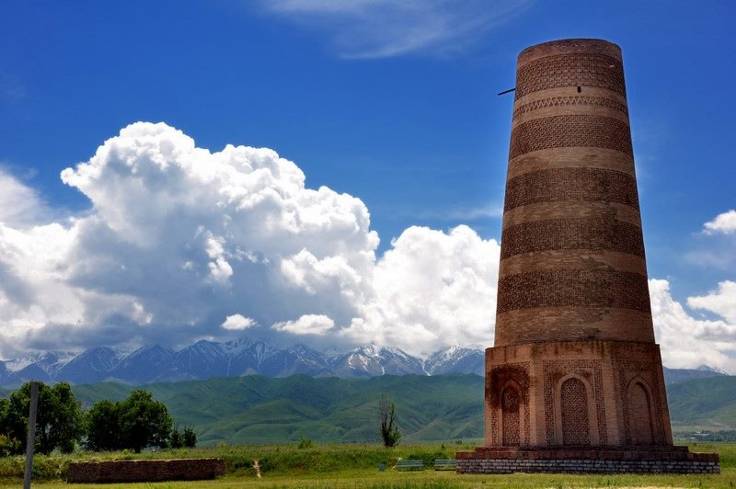
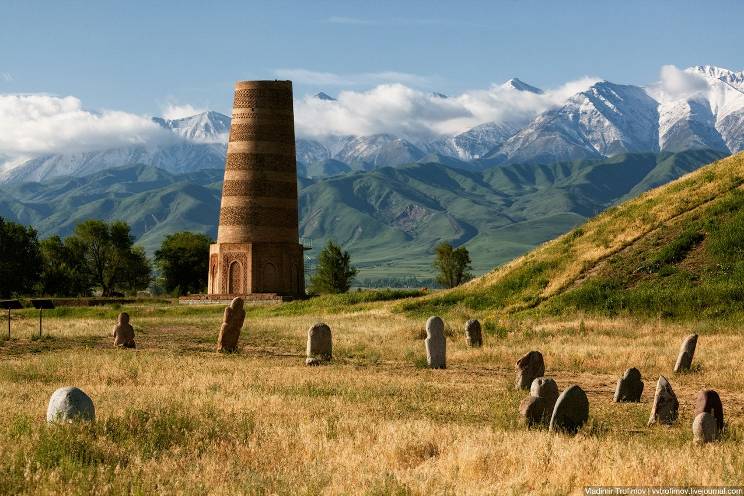
DAY 3. CHON-KEMIN - CHOLPON-ATA TOWN
Transfer to the Lake. En the route visit an open gallery of petroglyphs.
Lunch.
Accommodation at the hotel on the shore of Issyk-Kul Lake.
Free time.
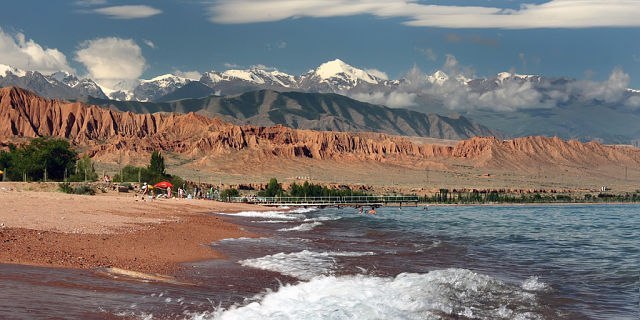
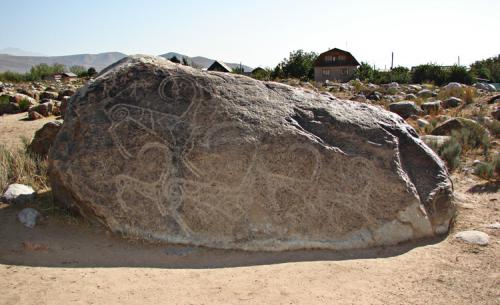
DAY 4. CHOLPON-ATA TOWN - KARAKOL TOWN
Transfer to Karakol Town. En the route visiting cultural complex of N.M.Prjzevalsky.
Lunch in Karakol Town, City tour including visiting Dungan mosque, Orthodox Church, antique shop.
Accommodation at the hotel.
Prjevalski Museum
Nikolay Mikhailovich Przhevalsky is one of the first Russian Scientist-Geographer who started studying in details the geography, flora and fauna of the Central Asian countries. Beginning from 1870, he arranged 4 large expeditions to Mongolia, China and the Tibet. During his expeditions he revealed the exact directions of the mountain ranges and borders of the Tibet Mountains. He described the nature, relief, climate, flora and fauna in the territories under his study and discovered over 200 plant species. Przhevalsky also collected an enormous zoological collection which comprised several thousand of species of plant, animals, birds, fishes and insects. In the year of 1888, he died from typhoid fever on the eve of his fifth expedition to Central Asia; he was buried on the Issyk-Kul lakeside not far from the city of Karakol. The Memorial Museum of N. M. Przhevalsky was opened on 29 April 1957 in Karakol.
Orthodox Church
The story of the church goes back to July, 1869, when Karakol was basically a garrison town established as an outpost on the edges of the Tsarist Russian Empire. The Karakol Church, however, was destroyed in an earthquake in 1889 which caused havoc in the town and took several lives. It took six years to complete, and was finally consecrated in 1895. During the period of construction, a yurt served the congregation as a church. It has seen considerable service, not just as a church. Over the years, particularly following the Revolution in 1917, it has been used as an educational center housing a school, ladies’ gymnasium and an institution of Higher Education; a Sports Hall; a Theater; a Dance Hall and even as a Coal Store. Then, in 1991, following the collapse of the Soviet Union and the Independence of Kyrgyzstan, the local authority once again gave the building back to the church, with the proviso that all further restorations were their responsibility.
Dungan Mosque
Issyk-kul Central Mosque of Karakol city named after Ibrahim Aji was built by initiative of Ibrahim Aji. His given name is Ma - Yoo - Ton. He invited the famous Beijing architect Chou Seu and 20 carvers with the skills of traditional Chinese architecture and composition techniques for building the mosque. In the construction of outbuildings and other work were involved local craftsmen. Construction of the mosque began in 1904 and completed in 1907. Ingenious system allows builders to build the mosque with no metal reinforcement tools. The mosque holds 42 based pillars. Encircling of the building is multi-tiered wooden cornice, decorated with images of plants like grapes, pomegranates, pears and peaches. From 1929 to 1947 during the Soviet era mosque was used as a storehouse. In 1947, the building was given to the Muslim community and to the present day function as a mosque. Besides it the mosque is registered as a historical monument and protected by the law. Today mosque operates successfully and opens for everyone who visits our city.
Accommodation in a hotel.
Dinner at the Uighur family, participate in lagman show (the process of preparing traditional dish).
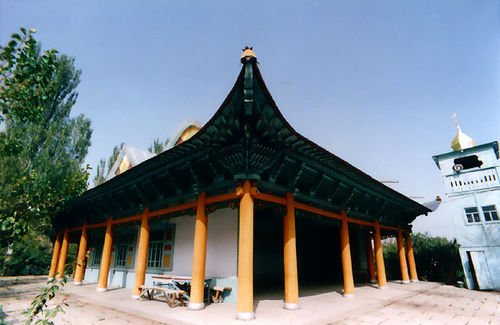
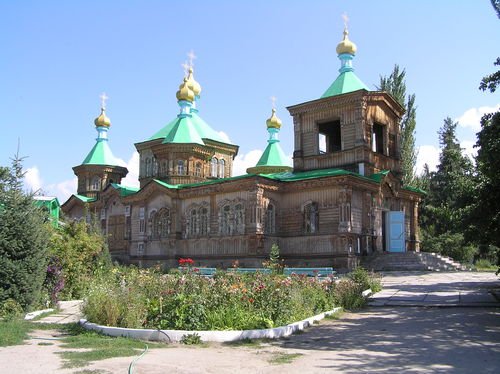
DAY 5. KARAKOL TOWN - KOCHKOR VILLAGE
Early in the morning visiting livestock in Karakol Town (I fit will be Sunday).
Transfer to Kochkorka Village. En the route visiting Djety-Oguz Gorge, Fairy Tail Gorge, demonstration of eagle hinting.
Lunch at the shore of the lake.
Accommodation at the homestay in Kochkorka Village.
Dinner.
The Fairy Tale Canyon / Skazka Canyon
The canyon was named because of its bizarre rocky landscape, which for many years has been transformed by wind into amazing sculptures and formations. Some formations look like The Great Wall of China and you can also find other formations that look like snakes, dragons, sleeping giants and even whole castles. From here opens unusual view on a majestic panorama of lake and blue caps of mountains. It’s an excellent destination for children and adults alike and makes for an easy hike close to the lake.
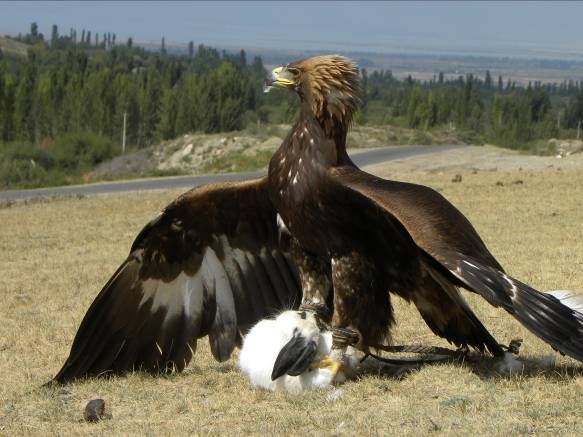
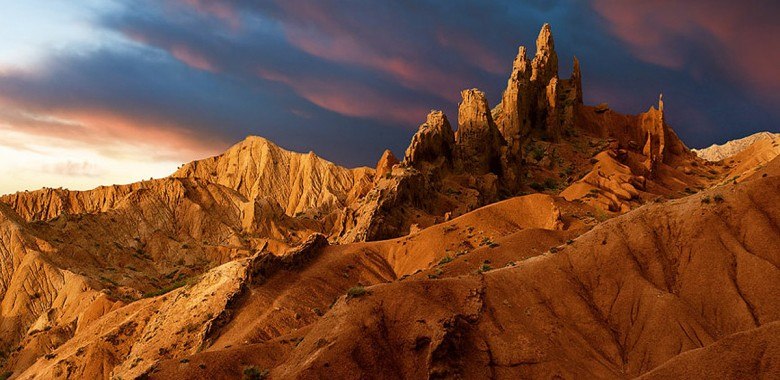
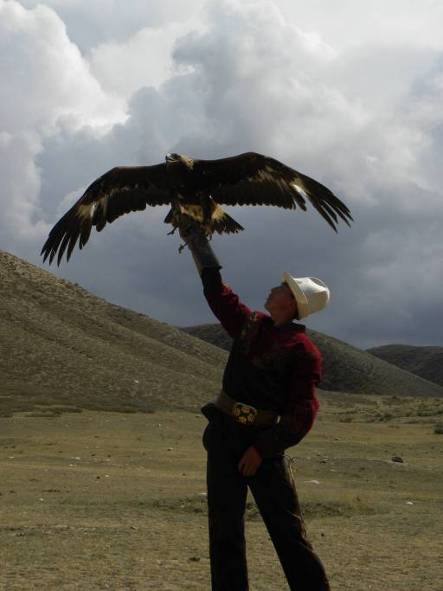
Visiting Jeti-Oguz Gorge.
Jeti-Oguz is famous for its large, red sedimentary rocks, about 2,200m. The rock have been carved out by a river from the Terskey Alatoo mountains. Years of weathering have split the rocks into seven parts. The forms of the rocks are similar to the head of the seven bulls, “Jeti”-means seven and “Oguz”-means bull in Kyrgyz. Another beautiful place to see is Broken Heart. This is a reddish rock shaped like a broken heart. For this rock, there are several legends: long ago a king who was very rich and had many wives went hunting. One day he saw a beautiful girl with black long hair. He fall in love with her at first sight, and wanted to marry her. However she was from a poor family and was already engaged. Her family ran away from the king when they learned that he wanted their daughter. But the king caught them, killed her fiancé and her family. Her heart was torn by sadness and the Broken Heart appeared in that place.
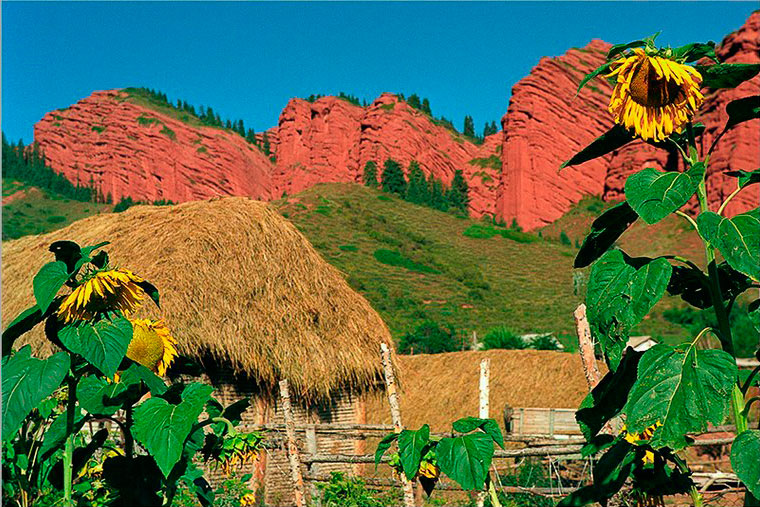
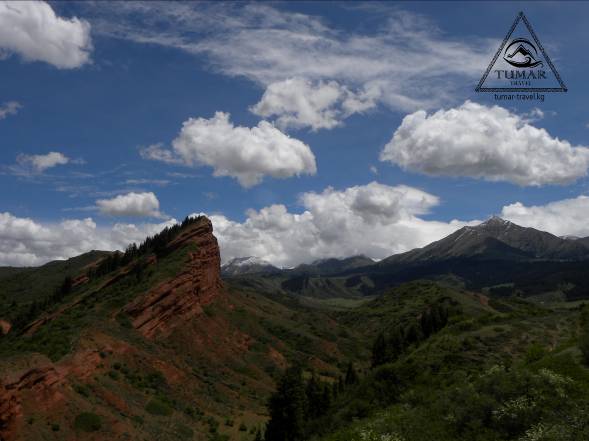
DAY 6. KOCHKOR VILLAGE - SON-KUL LAKE
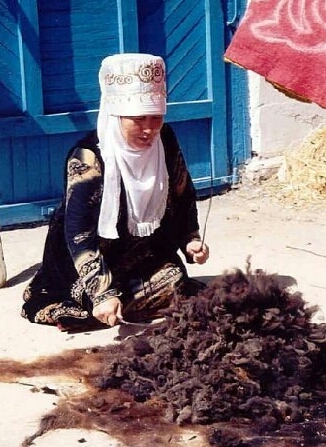
After breakfast visiting felt handicraft museum-shop, participating in national felt rug production.
Transfer to Son-Kul Lake. Accommodation at the yurt camp.
Song Köl (literally "following lake") is an alpine lake in northern Naryn Province, Kyrgyzstan. It lies at an altitude of 3016 m, and has an area of about 270 km2 and volume of 2.64 km3. Lake's maximum length is 29 km, breadth about 18 km, and extreme depth f 13.2 m. It is the second largest lake after Issyk Kul Lake, and the largest fresh water lake in Kyrgyzstan. Its name, meaning "following lake", is popularly considered to refer to this relation. It is surrounded by a broad summer pasture and then mountains. Its beauty is greatly praised, but it is rather inaccessible. The best approach seems to be the 85 km road from Sary-Bulak on the main north-south highway. Other routes require 4x4s. There are no facilities on the lake, but local herders will provide supplies and rent yurts. The area is inhabited and safely accessible only from June to September.
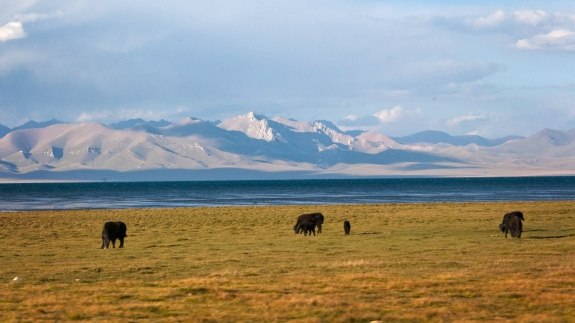
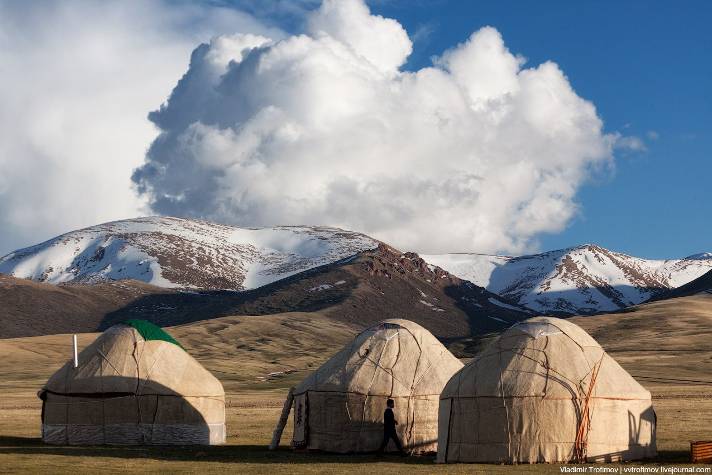
DAY 7. SON-KUL LAKE - KAZARMAN PASS
In the morning demonstration of horse game show.
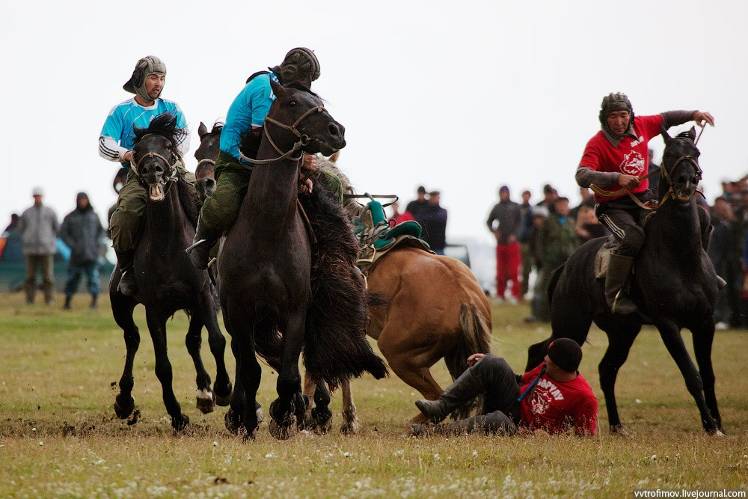
Transfer to Kazarman Pass. Lunch in the route. Accommodation at the guest house. Dinner
DAY 8. KAZARMAN PASS - ARSLANBOB
Transfer to Arslanbob (230 km). On the way visit to minarets of Uzgen city – remains of Kharahanid’s empire from XI c. Arrival to Arslanbob – the biggest in the world natural walnut forest. Dinner and overnight in homestay.
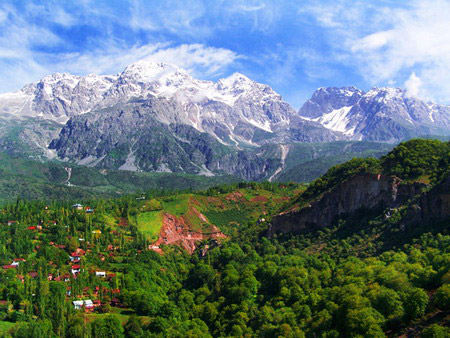
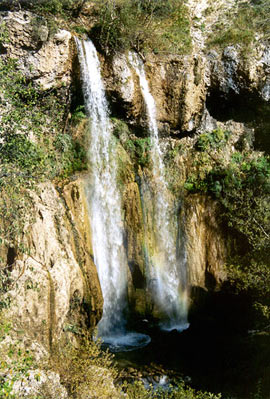
DAY 9. ARSLANBOB - CHICHKAN GORGE
Transfer to Chichkan gorge. Road goes through the Fergana valley and later rounded the Toktogul water reservoir – the one of the biggest in Central Asia. Upon arrival to Chichkan dinner and overnight at the guest house.
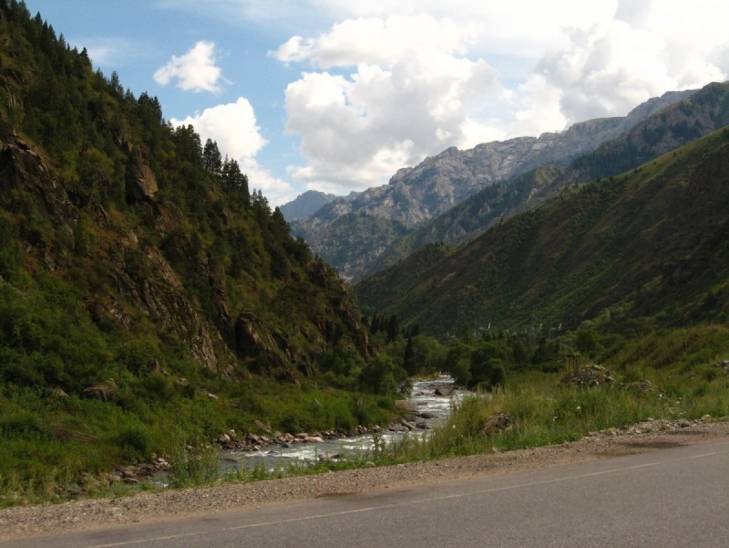
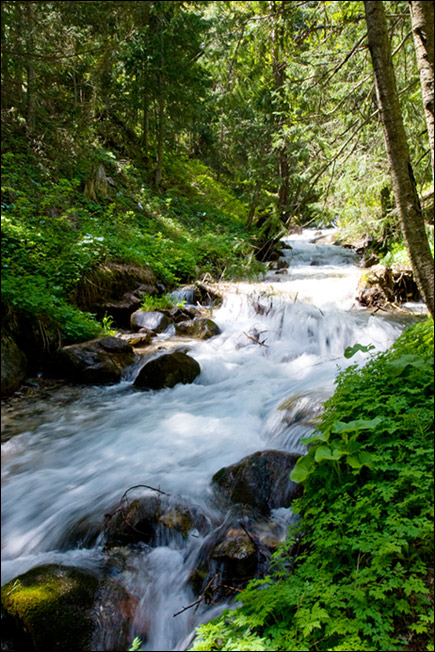
DAY 10. CHICHKAN GORGE - BISHKEK TOWN
Transfer to Bishkek. Accommodation at the hotel. Dinner. Relax.
DAY 11. BISHKEK
Transfer to the airport, departure.
It’s possible to change the program according to your wish…
